Good News
The report has come back from the university disease diagnosis lab clean. "There was no evidence of Pythium root root or any other disease...Your recent fungicide applications have apparently cleaned up the problem. Be aware that turfgrass with damaged roots can continue to show symptoms of stress until the plants begin to recover some root growth. Do what you can to alleviate stress on the sites." We will be rolling more, mowing less and going off of the normal pin rotation to reduce stress. We will continue to spoon feed nitrogen to the plants to try and promote growth and recovery.
Bad News
The highs over the next three days will be 97 °F, 102°F, and 98°F. This is obviously very tough on the bentgrass greens as well as all turf surfaces. This is our 20th straight day without rain and the results are starting to show. We are continuing to water from the quarry but you just can't substitute a good rainfall.
Decent News
The 10 day forecast looks good after Saturday. With highs in the low 90's, the greens will start to have a chance to recover. We hope to see some cooler nighttime temperatures to go along with the cooler afternoon highs. There are slight chances of rain with scattered thunderstorms so cross your fingers.
The report has come back from the university disease diagnosis lab clean. "There was no evidence of Pythium root root or any other disease...Your recent fungicide applications have apparently cleaned up the problem. Be aware that turfgrass with damaged roots can continue to show symptoms of stress until the plants begin to recover some root growth. Do what you can to alleviate stress on the sites." We will be rolling more, mowing less and going off of the normal pin rotation to reduce stress. We will continue to spoon feed nitrogen to the plants to try and promote growth and recovery.
Bad News
The highs over the next three days will be 97 °F, 102°F, and 98°F. This is obviously very tough on the bentgrass greens as well as all turf surfaces. This is our 20th straight day without rain and the results are starting to show. We are continuing to water from the quarry but you just can't substitute a good rainfall.
Decent News
The 10 day forecast looks good after Saturday. With highs in the low 90's, the greens will start to have a chance to recover. We hope to see some cooler nighttime temperatures to go along with the cooler afternoon highs. There are slight chances of rain with scattered thunderstorms so cross your fingers.
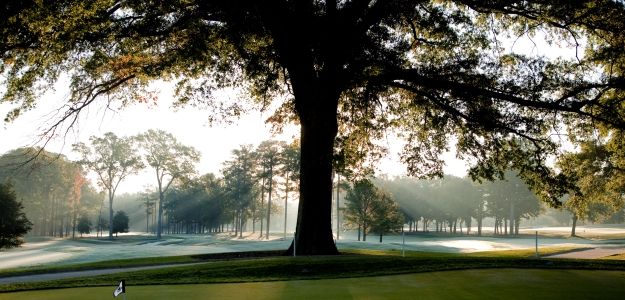
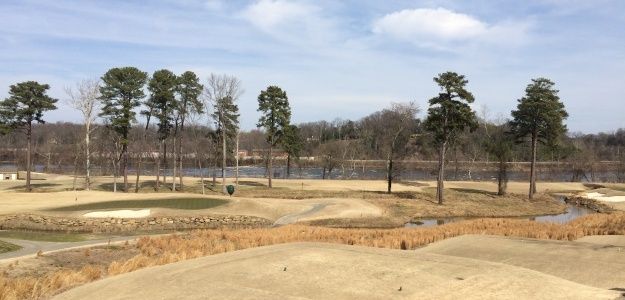
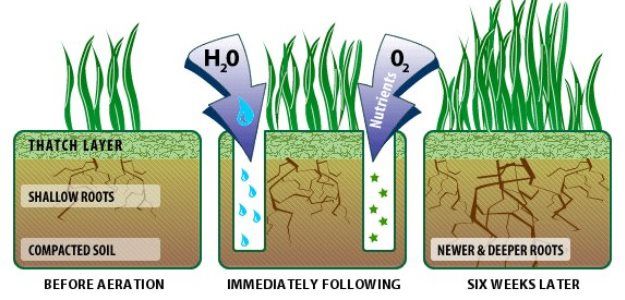
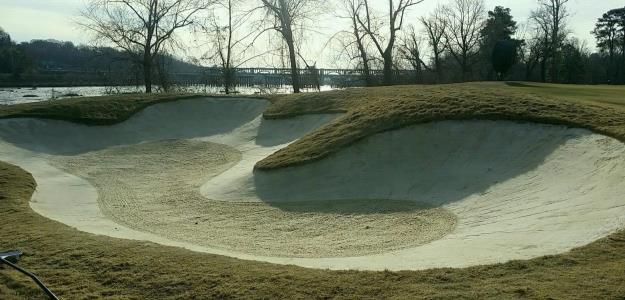
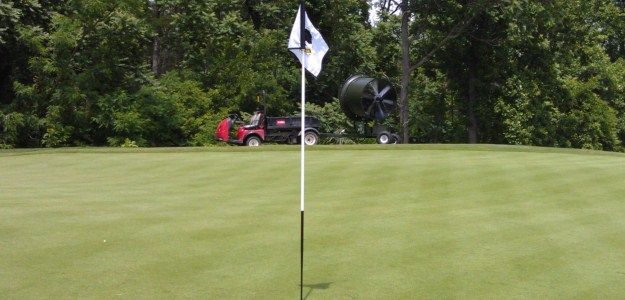



















 #12 Fairway Bunkers
#12 Fairway Bunkers
 #12 Green side Bunker
#12 Green side Bunker #8 Fairway Bunker
#8 Fairway Bunker

